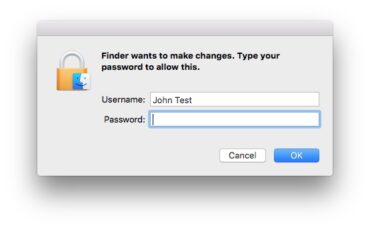
Under Reset Home Directory Permissions and ACLs, click the Reset button. Select your username from the menu labeled Select the user account if not already selected. Select your boot volume ("Macintosh HD," unless you gave it a different name) if not already selected. The partial command you typed will automatically be completed to this: When the OS X Utilities screen appears, selectįrom the menu bar. Take this step only if you have trouble with Step 1 or if it doesn't solve the problem.īoot into Recovery. Wait for a new line ending in a dollar sign (“$”) to appear, then quit Terminal. You can undo any changes to privilege settings for a user or group in the Sharing & Permissions section since opening the Info window. The command will take a noticeable amount of time to run. If you see a message that your username "is not in the sudoers file," then you're not logged in as an administrator. If you don’t have a login password, you’ll need to set one before you can run the command.

You may get a one-time warning to be careful. This time you'll be prompted for your login password, which won't be displayed when you type it. You can demote the problem account back to standard status when this step has been completed.Įnter the following command in the Terminal window in the same way as before (triple-click, copy, and paste): 2> /dev/null To do that, unlock the preference pane using the credentials of an administrator, check the box marked Allow user to administer this computer, then reboot. If you have more than one user account, and the one in question is not an administrator account, then temporarily promote it to administrator status in the Users & Groups preference pane. To change your own permissions on the item, click the Privilege pop-up menu next to your name handily marked (Me) as well and choose a new Ownership permissions. Click the right-facing arrow next to the Sharing & Permissions heading to expand it.
#Os x permissions reset mac os x
If none of this is meaningful to you, you don't need to worry about it. Either way, Mac OS X displays the Info dialog. Do so only after verifying that those settings didn't cause the problem. In that case, either stop here, or be prepared to recreate the settings if necessary.

If you've set special values for those attributes on any of your files, they will be reverted. This procedure will unlock all your user files (not system files) and reset their ownership and access-control lists to the default. Permissions are file settings that affect the ability to read, write, or execute (open or. Running the command resetpassword (all one. Using Disk Utility To Repair Permissions/Perform First Aid on Mac. Don't continue unless you're sure you can restore from a backup, even if you're unable to log in. Then click the button at the bottom of the utility to reset home folder permissions and ACLs (ACLs are a modern and advanced form of permissions rules).


 0 kommentar(er)
0 kommentar(er)
